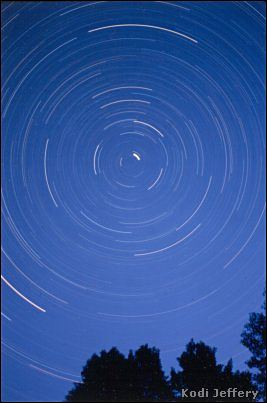

There's all sorts of talk about climate changes due to shifting conditions of the atmosphere and seas, but there are celestial happenings that also affect our climate. Since the earth's orbit around the sun is an ellipse, not a circle, the earth is closer to the sun during some seasons than others. We're closest to the sun during December; millennia from now we'll be closer in June. Think summers are hot now?
There's more. Seasons are caused by the tilt of the earth, the
sun's rays hitting more directly in summer and less so in winter; but the tilt
varies through time. Add to this the axis ascribing a circle like that of a wobbling
toy top. Today, the earth's axis points almost at the North Star; 6000 years ago it
pointed to the tip of the Big Dipper's handle. As a result, the seasons shift
through time. In a mere 12,000 years or so, June will be in the middle of winter! It
seems that Old Mother Earth is a bit of a shifty character!

Contributor: Arthur H. Harris, Laboratory for Environmental Biology, Centennial Museum, University of Texas at El Paso.
Desert Diary is a joint production of the Centennial Museum and KTEP National Public Radio at the University of Texas at El Paso.

Time-lapse photograph of the northern sky. The brighter star near the focal point is Polaris, the north star. Currently, the axis of the earth misses Polaris by about 1°. Photograph by Kodi Jeffery.